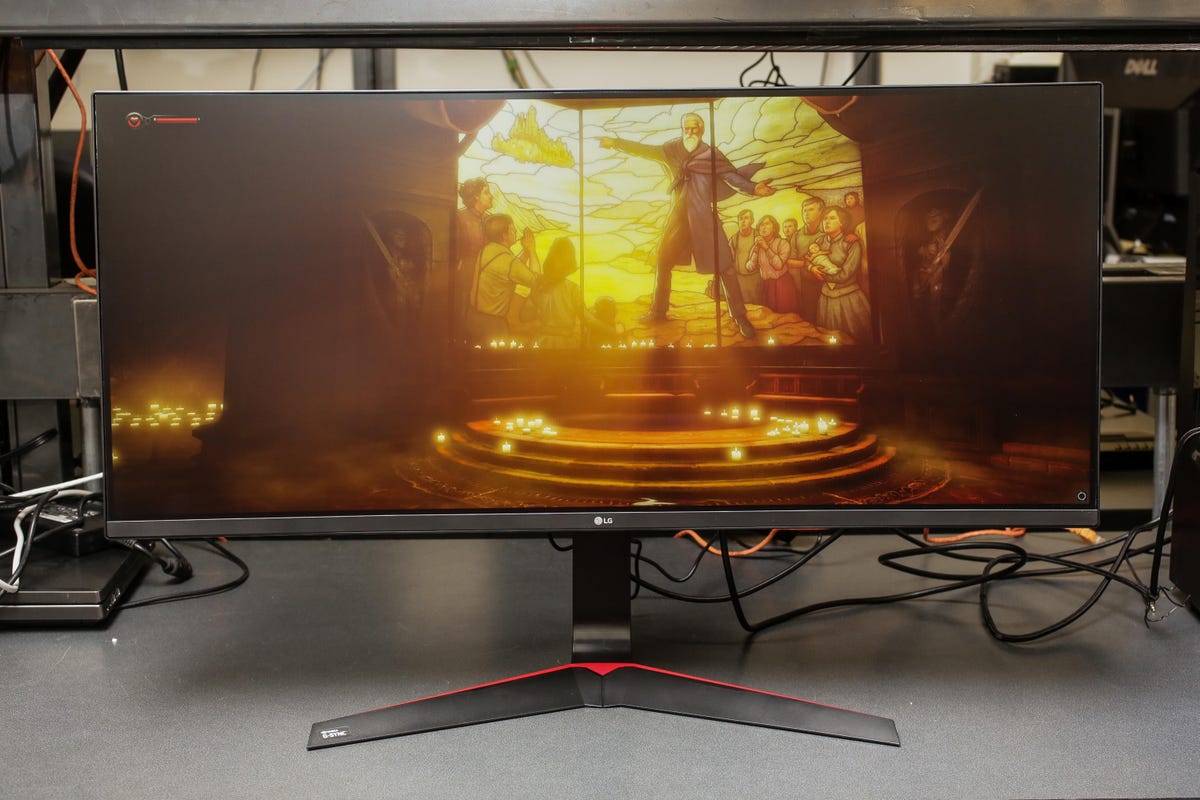
Not flashy up front
With the exception of the V-shaped base and a hint of red, there's nothing that screams "gaming monitor" from up front.
Back
The back is another story. Though sadly nothing lights up, the red accents and sharp angles give it the right look.
Connectors
There aren't a ton: two USB 3.0, an audio out, a DisplayPort and an HDMI.
Cable management
The connectors are at least easy to get to, and the stand has a plastic corral to slip the cables through, which also serves as a spot to hang your headset. You don't have to attach it, though.
Snap on
The monitor snaps on to the stand's VESA-size mount plate; the button unlocks it for removal.
As low as it goes
You can raise and lower the display enough that most people should be able to put it at a comfortable height.
As high as it goes
Ultrathin bezels
It looks like there are no bezels on the top or sides; they're just hidden. Still, they're pretty thin.
One control
I really like the joystick control for the onscreen menus. Unlike most monitors, LG puts it in the center bottom rather than the side for easy accessibility.
Base
Side
Tilt
The stand lets you tilt the display back about 20 degrees
Tilted back all the way
Onscreen menus
The menu design really reflects the monitor's game focus.
Onscreen menus
All of the presets, with the exception of Reader, are for games -- and Reader is a blue-light reduction mode that's way too dim and warm. They're customizable, though. The FPS modes have boosted response times, and the FPS and RTS options have varying Black Stabilizer settings.
Presets
Presets
While each of the presets has different default settings, they're all customizable. Unfortunately, you can't attach a refresh rate or G-Sync status to them.
Options
The G-sync status and refresh rate are just informative -- you don't set them here, only via the Nvidia driver.
Information
Picture settings
You get three gamma presets with uninformative names (gamma1!), color temperature settings like "warm" and "cool", and the ability to set the RGB values independently.

